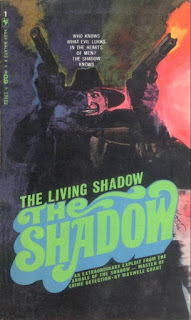1974's Mr. Majestyk
is a curious little early action film that's largely been forgotten,
despite having a reasonably large pedigree.
It
stars timeless tough guy Charles Bronson as Vince Majestyk.
It was
written by pulp western and crime novelist Elmore Leonard.
And it
was directed by big picture filmmaker Richard Fleischer, who directed
20,000 Leagues Under the Sea, Soylent Green, Fantastic Voyage and,
uh, Conan the Destroyer.
Its about a grumpy Vietnam veteran with
a criminal record who now owns a melon farm in Colorado. All he wants
to do is bring in his harvest for the year, but fate seems to have it
out for him.
Sounds like a Steinbeck novel about the
plight of the working class and death of the American Dream, right?
Wrong. This is Bronson we're talking
about, not Tom Joad.
After a confrontation with a small time
shakedown scheme, Majestyk gets arrested on bogus charges. During a
stay in prison, he meets mob hitman Frank Renda, played by gangster
character actor Al Lettieri. The two hate each other immediately.
When the mob tries to spring Renda
during a prisoner transfer, a firefight with the cops ensues. In the
chaos, Majestyk grabs the keys to Renda's handcuffs and drives off
with him in the prison bus. Renda tries to cut a deal, but Majestyk
has other plans.
He wants to hand the hitman over to the
police in exchange for dropping the charges against him so he can go
back to his melon farm. It doesn't work out as planned. Renda escapes
and boy is he mad.
The good news is that the charges
against Majestyk got dropped. The bad news is that Renda's out to
kill him. The best news is that he can go back to his melon harvest.
On one condition: That he act as bait to lure out Renda.
The harvest is brought in successfully.
He starts up a relationship with migrant worker and union activist
Nancy Chavez (Linda Cristal). He helped her out at the beginning of
the movie and hired her group.
But then tragedy!
Renda makes his move, but Majestyk's
not at home, so the mobster settles for the next best thing:
destroying the melon harvest with sad violin music playing over it. I
swear it makes more sense in context.
What follows is a very satisfying road
to revenge. Its got shootouts. Its got an old Ford pickup barreling
down perilous mountain trails with Bronson bouncing around in the
flatbed shooting a shotgun. Its got ramp jumps. Its got a car going
over the side of a cliff and exploding. Its got Bronson jumping
through a window blasting away with his shotgun.
Its good stuff.
There's a few nods to the labor
disputes of the early 70s, but at its core, its basically a
libertarian western. The man just wants to get his harvest in and
make some money, and the cops do nothing except get in the way of
that.
Everybody
else in the movie thinks he's crazy, since with all the madness going
on, his main fixation is the melon harvest. But in context, it makes
sense. Its his livelihood and independence on the line, and he'd be
ruined it he couldn't sell the crop. Even the melon massacre works in
that context. The hero and villain both understand the symbolism of
the crop.
There
are some slower parts here and there, but Leonard's script keeps
things building nicely.
It may
not be his finest work, but at the end of the day, its Charles
Bronson kicking ass for a hundred minutes. What more do you need to
recommend it?








